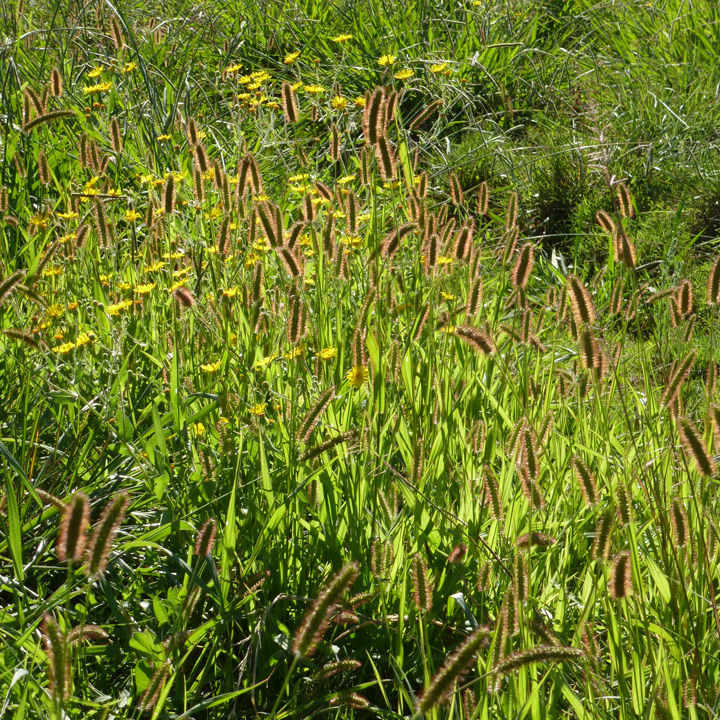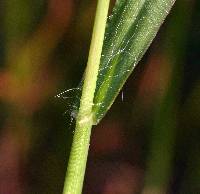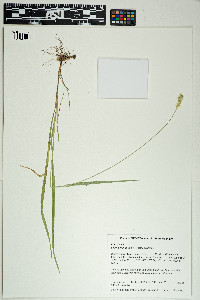|
|
|
|
Family: Poaceae
cattail grass, more...yellow foxtail
[Setaria parviflora/pumila, moreSetaria pumila (Poir.) Roem. & Schult.] |
Plants annual. Culms 30-130 cm. Sheaths glabrous; ligules ciliate; blades 4-10 mm wide, loosely twisted, adaxial surfaces with papillose-based hairs basally. Panicles 3-15 cm, uniformly thick, erect, densely spicate; rachises hispid; bristles 4-12, 3-8 mm, antrorsely scabrous. Spikelets 2-3.4 mm, strongly turgid. Lower glumes about 1/3 as long as the spikelets, 3-veined, acute; upper glumes about 1/2 as long as the spikelets, 5-veined, ovate; upper florets often staminate; lower lemmas equaling the upper lemmas; lower paleas equaling the lower lemmas, broad; upper lemmas conspicuously exposed, strongly transversely rugose. 2n = 36, 72. Reports of Setaria nigrirostris (Nees) T. Durand & Schinz in North America have not been verified. It differs from S. pumila in being a rhizomatous perennial with spikelets 3.5-5 mm long and bristles with thickened tips (those of S. pumila are slender throughout). It is a native of southern Africa. FNA 2003, Gould 1980, Barkworth 2007 Common Name: yellow foxtail Duration: Annual Nativity: Non-Native Lifeform: Graminoid General: Introduced tufted annual grass, stems branching at base, usually geniculate, 30-100 cm tall. Vegetative: Sheath open, keeled, only slightly compressed, one margin ciliate; ligule a dense fringe of stiff, white hairs, 1 mm long; blades flat, 4-12 mm wide, 5-25 cm long, loosely twisted, long hairs near throat, these pustulate, 3-4 mm long. Inflorescence: Panicle well exserted from sheath, dense, spike-like, cylindrical, 2-10 cm long, mostly 5-7 mm thick, excluding awns; bristles 5-20 in cluster, mostly 4-8 mm long but occasionally longer, yellow, golden, or purple, antrorsely scabrous; spikelets 2.5-3 mm long; glumes shorter than sterile lemma and fertile lemma, first glume one-third as long, the second half or slight more as long; fertile lemma coarsely transverse-rugose, usually more or less short-beaked at apex. Ecology: Found in lawns, irrigated lands, waste places, in disturbed soils from 4,500-7,000 ft (1372-2134 m); flowers July-October. Distribution: Native to Eurasia and Africa, naturalized in North America and Australia. In North America, found throughout the lower 48 states and the southern Canadian provinces. Notes: Setaria spp. have inflorescences with short, mostly contracted branches and single-seeded, hard spikelets subtended by persistent bristles that remain on the plant after the spikelets have fallen. S. pumila is distinctive for its golden yellow to purple bristles. S. viridis sometimes has purple (but not golden) bristles, but the two species can be distinguished by the number of bristles subtending each spikelet. S. pumila has 4-12 bristles below each spikelet, while S. viridis has 3 or fewer. Barkworth et al (2007) list a bristle length of 4-8 mm for both species, but perusal of herbarium specimens shows a trend of S. pumila bristles being at the low end of that range, and S. viridis bristles more often with lengths around 8 mm. Ethnobotany: Unknown Etymology: Setaria is from Latin saeta, a bristle or hair, pumila means dwarf. Synonyms: Setaria lutescens Editor: SBuckley, 2010, AHazelton 2015 |




